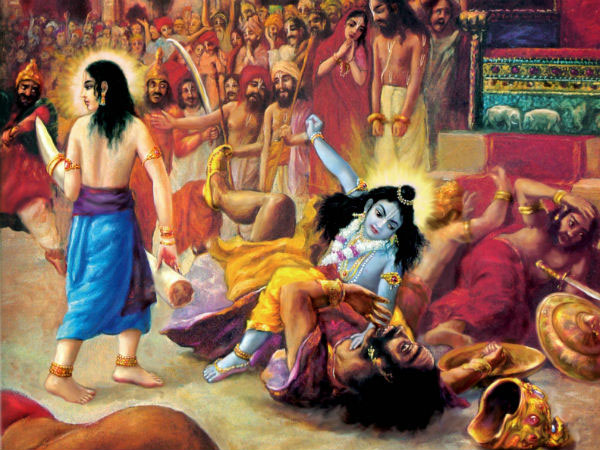
Janmashtami Traditions and Customs: A Journey Through the Festivities
Janmashtami, also known as Krishna Janmashtami or Gokulashtami, is a significant Hindu festival that celebrates the birth of Bhagwan Krishna, one of the most revered deities in Hinduism. This joyous occasion is observed with great enthusiasm and devotion by millions of people across India and around the world.
Janmashtami falls on the eighth day (Ashtami) of the Hindu lunar month of Bhadrapada, which typically occurs in August or September.
The Legend of Bhagwan Krishna’s Birth:
According to Hindu mythology, Bhagwan Krishna was born in Mathura, a town in northern India, over 5,000 years ago. He was the eighth avatar (incarnation) of Bhagwan Vishnu and was believed to be a divine child with extraordinary qualities. His birth was destined to bring an end to evil and establish righteousness on Earth.
The festival of Janmashtami commemorates the fascinating events surrounding Krishna’s birth. It is said that Krishna’s parents, Devaki and Vasudeva, were imprisoned by Devaki’s wicked brother, King Kamsa. Kamsa had received a prophecy that Devaki’s eighth child would be the cause of his demise. As each child was born, Kamsa mercilessly killed them.
However, when Lord Krishna was born, a series of miraculous events occurred. The prison gates opened, and Vasudeva was able to carry baby Krishna to safety across the river Yamuna. Krishna was then raised in Gokul by his foster parents, Nanda and Yashoda. Later Krishna killed kansa and freed his parents.

Krishna comes to make us understand that you need to follow your dharma to maintain balance in the universe, dharma does not mean religion here it means social justice and balance.
He taught us that every person should follow their own dharma in order to achieve peace and mokhsa (free from the cycles of death and birth) in the great war of Mahabharata he gave his teachings which is now known as Bhagvad Geeta.
Krishna says whenever the balance of earth (adharma) would be become too difficult to handle, then he will descend on earth to remove the evil and restore the dharma (you can assume balance).
He says in one of his shlokas in Mahabharata:
“yadā yadā hi dharmasya glānir bhavati bhārata abhyutthānam adharmasya tadātmānaṁ sṛijāmyaham – paritrāṇāya sādhūnāṁ vināśhāya cha duṣhkṛitām dharma-sansthāpanārthāya sambhavāmi yuge yuge”
Whenever and wherever there is a decline in religious practice, O descendant of Bharata, and a predominant rise of irreligion – at that time I descend Myself. /Bhagavad Gita 4.7/ To deliver the pious and to annihilate the miscreants, as well as to reestablish the principles of religion, I Myself appear, millennium after millennium. /Bhagavad Gita 4.8/
Celebrations and Customs in Janmashtami
Janmashtami is observed with immense fervour and excitement throughout India. Temples and homes are beautifully adorned with flowers, lights, and decorations. Devotees fast throughout the day and break their fast at midnight, the time when Lord Krishna is believed to have been born.
The most remarkable aspect of Janmashtami celebrations is the enactment of Krishna’s childhood episodes. Elaborate tableaus called “jhankis” are created, depicting scenes from Krishna’s life, including his mischievous pranks, his playful interactions with his friends and cows, and his endearing encounters with Radha, his eternal consort.
In temples, devotees gather for special prayers and bhajans (devotional songs) glorifying Lord Krishna. The atmosphere is filled with devotion and spiritual fervor. People also engage in fast-paced dancing called “Dahi Handi” or “Matki Phod,” where a human pyramid is formed to reach and break an earthen pot filled with curd or buttermilk, symbolizing the playful nature of Bhagwan Krishna.
The Significance of Janmashtami:
Janmashtami holds immense spiritual and philosophical significance. Bhagwan Krishna’s teachings in the Bhagavad Gita, an ancient Hindu scripture, emphasize the importance of righteousness, devotion, and duty. His divine plays (leelas) inspire devotees to lead a life of love, compassion, and selflessness.
Krishna is revered as the epitome of charm, intelligence, and divine love. His enchanting personality and divine qualities have made him a beloved figure not only in Hinduism but also among people from various backgrounds and cultures worldwide. Janmashtami serves as a reminder of the eternal message of love and righteousness that Lord Krishna imparted to humanity.
Beyond the religious aspects, Janmashtami also showcases the rich cultural heritage of India. The festivities bring people together, fostering unity, harmony, and a sense of community. It is a time when families, friends, and communities come together to celebrate, exchange gifts, and share joyous moments.
In Conclusion:
Janmashtami, the celebration of Bhagwan Krishna’s birth, is a cherished festival that unites devotees in their love and devotion for the divine. It symbolizes the victory of good over evil and reminds us of the timeless teachings of Bhagwan Krishna. The festival not only holds religious significance but also promotes unity, cultural heritage, and the values of love, compassion, and righteousness. As millions of devotees celebrate Janmashtami, the festival continues to inspire and uplift the hearts and minds of people worldwide.
If you are planning to celebrate Janamashtami, you can read the below post for delicious food items for Janmashtami :
For more content like this keep visiting www.orangedosa.com